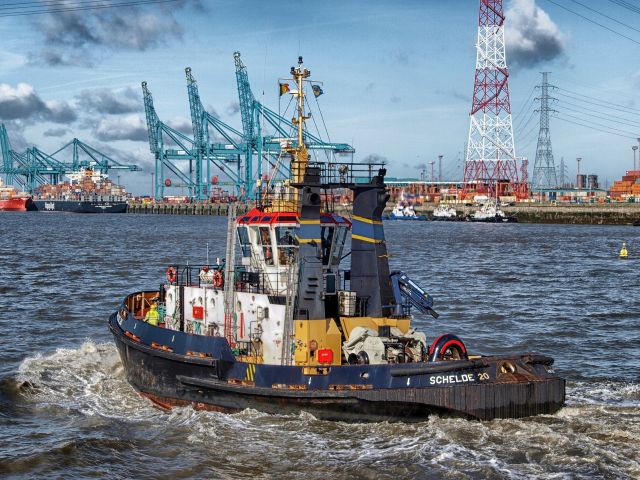July saw a major development in Antwerp’s port, with the announcement of the start of a stakeholder-inclusive process to expand container capacity.
The process will start with a much smaller new dock than originally foreseen, coupled with a series of initiatives to expand capacity elsewhere in the port.
Antwerp’s original plan to construct a major new tidal dock called ‘Saeftinghedok’ has been fiercely opposed for years by Doel 2020, a group of residents of the small village of Doel (and their supporters). This village, according to the port development plans, had to be moved to make way for the new basin and the group successfully contested government decisions by bringing the case to national and European courts, where the decision to dismantle the village was revoked.
For years, the dispute was a David vs Goliath-like encounter where Doel 2020 earned sympathy but was widely expected to ultimately lose the fight to preserve the village. A recent cautious announcement that the Flemish Government, Doel 2020 and other stakeholders including Antwerp’s port authority are studying an option that would enable port development while preserving the village of Doel should be considered as a major breakthrough.
Even if these conversations do not result in an agreement, it is hard to see now how the option to dismantle Doel can prevail. Now that the stakeholders have agreed on a co-operative path, concessions to stakeholders opposing the previous port development plans seem unavoidable. Thus, arguably, for Doel 2020, this initiative and its public announcement is a major achievement.
The success of Doel 2020 in influencing port development is partly driven by European regulation which protects ecological assets, and also partly by an increasing societal support for a critical stance towards port development, especially when port development has perceived negative consequences for nature, cultural assets and/or health and living conditions of nearby residents.
While the case of Antwerp is singular, a path where seemingly marginal stakeholder groups manage to create support for their case and deeply impact port development is increasingly realistic. While many port authorities, including Antwerp’s port authority, claim to involve stakeholders, the Antwerp case suggests it may be wise to spend some time on the question ‘are we inclusive enough?’.
First published @Port Strategy













